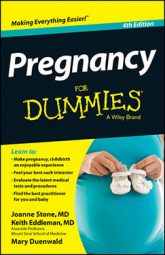To induce labor means to cause it to begin before it starts on its own. Induction may be a necessity (due to some obstetric, medical, or fetal complications) or elective (performed for the convenience of the patient or her practitioner).
Medically indicated induction
An induction is indicated (is a medical necessity) when the risks of continuing the pregnancy are greater — for the mother or the baby — than the risks of early delivery.
Problems with the mother’s health that may warrant induction include
Preeclampsia
The presence of certain diseases, such as diabetes or cholestasis, which may improve after delivery
An infection in the amniotic fluid, such as chorioamnionitis
Potential risks to the baby’s health that may warrant induction include
Pregnancy well past the due date. Because this can increase the risk of certain complications, most practitioners induce labor after the 41st or 42nd week.
Ruptured membranes before labor has started, a situation that may place the baby at risk for developing an infection.
Intrauterine growth restriction.
Suspected macrosomia (fetus weighing more than 8 pounds, 13 ounces).
Rh incompatibility with complications.
Decreased amniotic fluid (oligohydramnios).
Tests of fetal well-being indicating the fetus may not be thriving in the uterus.
Elective induction
Although some women like the idea of a planned delivery, others prefer labor to occur spontaneously. Some practitioners gladly perform elective inductions, and others are opposed to the whole concept of it. A woman may choose to undergo an elective induction for several reasons, including the following:
To enable her to make arrangements for her other children, for her work or her partner’s work, or for the convenience of other family members by knowing exactly which day she’s going into labor
To ensure that a particular physician in a group practice, with whom she has developed a special relationship, delivers her baby
To deliver when the maximum number of labor floor personnel or other specialists are present if she’s at risk for certain neonatal or labor complications
To reduce anxiety after a history of poor pregnancy outcomes (such as a previous full-term fetal death) by delivering earlier than she naturally would
To make sure she’ll get to the hospital on time if she lives far away and has a history of rapid deliveries
Some studies in medical literature suggest elective induction of labor may lead to an increase in cesarean deliveries. If the cervix is neither dilated nor effaced, or if the fetal head isn’t engaged in the pelvis, the risk of a cesarean delivery is probably higher.
But if all conditions are favorable for induction, the risk of cesarean may not be increased at all. However, the length of time the patient spends in the hospital is likely to increase slightly when labor is induced.
If an elected induction of labor is planned, it should not be performed at less than 39 weeks along in the pregnancy. Delivery before this time should be medically indicated. If you’re considering elective induction of labor, you and your partner should fully understand that you may stand a slightly increased risk of needing a cesarean delivery.
If both the expectant parents and the practitioner involved understand these risks, elective induction of labor can be appropriate for personal, medical, geographical, or psychological reasons.
Inducing labor
The way in which labor is induced depends on the condition of the cervix. If your cervix isn’t favorable, or ripe (thinned out, soft, and dilated), your practitioner may use various medications and techniques to ripen it. Occasionally, ripening alone may put you right into labor.
Some recent information in medical literature indicates that the risk of uterine rupture is higher in women who have had a cesarean section in the past and are having labor induced. The risk of this potentially serious complication seems to be highest if the patient is given a prostaglandin for induction. For this reason, many practitioners prefer not to induce with prostaglandins, and instead prefer to use a balloon catheter.
If you require induction, you’re likely to be admitted to the hospital in the evening and given medications to ripen the cervix at bedtime. Then your practitioner can administer oxytocin (a synthetic hormone similar to one that your body naturally releases during labor) to induce labor in the morning.
If your cervix is already ripe, you’re likely to be admitted in the morning. Labor is then induced either by administering oxytocin intravenously or by rupturing your membranes (often called breaking your water).
The doctor performs an amniotomy, or rupturing of the membranes, with a small plastic hook during an internal examination. This procedure usually isn’t painful. Your practitioner then instructs your nurse to administer oxytocin (usually known by its brand name, Pitocin) through an IV, and a special pump carefully adjusts and controls the dosage.
Oxytocin is a hormone that causes the uterus to contract. It can be used to start labor for induction, or speed up labor that started on its own. You begin with very little medication, and the level of medication increases at regular intervals until you have adequate contractions.
Sometimes labor starts within a few hours after the induction is started, but it may take much longer. Occasionally, it may take as long as two days to really get things going.
A common misconception is that oxytocin makes labor more painful. It doesn’t. Oxytocin is similar to the hormone that your body naturally releases during labor, and it is administered in about the same doses that your body would produce to cause normal labor.
Augmenting labor
Doctors can also use oxytocin to augment labor that is already happening. If your contractions are inadequate or if labor is taking an unusually long time, your practitioner may use oxytocin to help move things along. Again, the contractions produced as a result of this augmentation are no stronger and no more painful than contractions occurring during a spontaneous labor.

